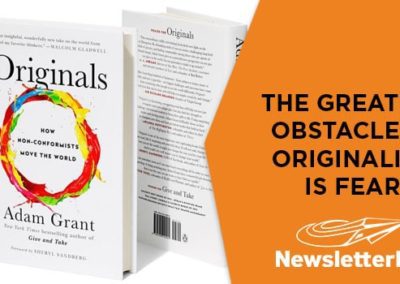In the modern workplace, team cohesion is vital. It’s the glue that binds individuals into a unified force.
But how can we foster this unity? How can we ensure everyone feels connected, informed, and valued?
One powerful tool is the team-building newsletter.
This isn’t just a simple update or memo. It’s a platform for sharing, celebrating, and connecting. It’s a tool that can strengthen team bonds and enhance communication.
In this article, we’ll delve into the world of team building newsletters. We’ll explore their purpose, their benefits, and their potential to transform team dynamics.
We’ll also share practical tips and best practices. These will help you create engaging, impactful newsletters that resonate with your team.
Whether you’re a team leader, a manager, or an HR professional, this guide is for you. Let’s start building stronger connections today.
The Importance of Team Building Newsletters
In today’s fast-paced work environment, effective communication is crucial. It’s the backbone of successful teamwork and collaboration.
And that’s where team-building newsletters come in.
These newsletters are more than just a communication tool. They’re a way to foster a sense of community and belonging within a team. They can help bridge gaps, break down silos, and create a shared sense of purpose.
Here are some key reasons why team-building newsletters are so important:
- Enhanced Communication: Newsletters can provide regular updates on team projects, initiatives, and achievements. This keeps everyone in the loop and fosters a sense of transparency.
- Recognition and Celebration: Newsletters can highlight individual and team successes. This can boost morale and create a culture of recognition and appreciation.
- Shared Knowledge: Newsletters can be a platform for sharing knowledge and insights. This can foster learning and innovation within the team.
- Community Building: By sharing team news and stories, newsletters can help build a sense of community. They can make team members feel more connected and engaged.
In essence, team building newsletters are a powerful tool for fostering unity and cohesion. They can help create a positive team culture where everyone feels valued and heard.
In the following sections, we’ll delve deeper into how to create effective team building newsletters. We’ll explore best practices, tips, and strategies to help you maximize their impact.

Defining Team Building Newsletters and Their Objectives
So, what exactly are team building newsletters? In essence, they are regular communications sent to team members. They contain updates, news, and information relevant to the team.
But they serve a purpose beyond just information sharing.
The primary objective of these newsletters is to foster a sense of unity and cohesion within the team. They aim to create a shared understanding and a sense of belonging among team members. They can help bridge communication gaps, especially in remote or hybrid teams.
In short, team building newsletters are a strategic tool. They can help align team members with the team’s goals and values. They can also foster a positive team culture, where everyone feels connected and engaged.
The Benefits of Regular Team Updates Through Newsletters
Regular team updates through newsletters offer numerous benefits. They are a simple yet effective way to keep everyone on the same page.
Firstly, they ensure that all team members are informed about the latest developments. This includes updates on ongoing projects, changes in policies, or any other important news.
Secondly, newsletters can serve as a platform for recognizing and celebrating team achievements. This can boost morale and foster a sense of pride within the team.
Thirdly, they can help create a sense of community within the team. By sharing personal updates or spotlighting individual team members, newsletters can help build stronger interpersonal relationships.
Lastly, newsletters can also serve as a tool for learning and development. They can include educational content, tips, or resources that can help team members improve their skills.
In summary, the benefits of regular team updates through newsletters include:
- Keeping team members informed about important updates
- Recognizing and celebrating team achievements
- Building a sense of community within the team
- Serving as a tool for learning and development
Newsletter Best Practices for Maximum Impact
Creating a team building newsletter that resonates with your team requires a strategic approach. It’s not just about sharing updates, but also about engaging your team and fostering a sense of community.
The first step is to understand your audience. Know what kind of content your team members would find valuable and interesting. This could range from project updates to personal stories, educational resources, or even fun facts and trivia.
Next, make sure your content is clear and concise. Avoid jargon and complex language. Your goal is to communicate effectively, not to confuse your readers.
Also, consider the tone of your newsletter. It should reflect your team’s culture and values. A friendly and conversational tone can make your newsletter more engaging and relatable.
Finally, don’t forget to include a call to action. Encourage your team members to respond, share their thoughts, or contribute to the next issue. This can help foster a sense of ownership and engagement.
In summary, the best practices for creating an impactful team-building newsletter include:
- Understanding your audience
- Keeping content clear and concise
- Reflecting your team’s culture and values in the tone
- Including a call to action
Crafting Engaging Content
Crafting engaging content for your newsletter is crucial. It’s what grabs your team’s attention and keeps them reading.
Start with a compelling headline. It should be catchy, but also give a clear idea of what the newsletter is about.
Next, structure your content well. Break it down into sections or bullet points to make it easy to read. Use subheadings to guide your readers through the content.
Finally, make your content relevant. It should resonate with your team and provide value to them. This could be in the form of useful information, insights, or even entertainment.
Design and Layout Considerations
The design and layout of your newsletter can greatly affect its readability. A well-designed newsletter is easy on the eyes and makes the content more digestible.
Firstly, choose a clean and simple design. Avoid clutter and use white space effectively to separate different sections.
Secondly, use visuals to enhance your content. This could be in the form of images, infographics, or even emojis. Visuals can make your newsletter more engaging and help convey your message more effectively.
Lastly, ensure your newsletter is mobile-friendly. Many of your team members will likely be reading it on their phones, so it’s important that it looks good and is easy to read on smaller screens.
Scheduling and Consistency
Consistency is key when it comes to newsletters. Sending your newsletter on a regular schedule can help build anticipation and establish a routine.
Decide on a frequency that works best for your team. This could be weekly, bi-weekly, or monthly. Stick to this schedule as much as possible to keep your team engaged and looking forward to the next issue.
Remember, consistency is not just about frequency. It also applies to the quality of your content. Ensure each issue of your newsletter is as informative and engaging as the last.

Personalizing Newsletters to Enhance Team Engagement
Personalization can significantly enhance the impact of your team-building newsletters. It makes your team members feel valued and recognized.
One way to personalize your newsletters is by highlighting individual team members. This could be in the form of employee spotlights or interviews. Sharing personal stories can help build connections within the team.
Another approach is to tailor content based on team members’ roles or interests. For instance, you could have sections dedicated to different departments or project teams.
Remember, the goal is to make each team member feel seen and heard. Personalization can go a long way in achieving this.
Celebrating Team Achievements
Celebrating team achievements is a great way to boost morale and foster a sense of unity. It shows your team that their hard work is recognized and appreciated.
You could dedicate a section of your newsletter to celebrate these achievements. This could include project milestones, individual accomplishments, or even personal milestones like birthdays or work anniversaries.
Introducing New Team Members and Initiatives
Your newsletter can also serve as a platform to introduce new team members or initiatives. This helps keep everyone in the loop and fosters a sense of inclusion.
For new team members, you could include a brief introduction and a fun fact about them. For new initiatives, provide a brief overview and explain how it impacts the team.
Leveraging Feedback to Refine Your Newsletter Strategy
Feedback is a crucial component in refining your newsletter strategy. It helps you understand what’s working and what needs improvement.
You can gather feedback through surveys or by simply asking your team members for their thoughts. Encourage them to share their likes, dislikes, and suggestions for future content.
Remember, the goal of your newsletter is to engage and inform your team. Therefore, their feedback is invaluable in ensuring your newsletter achieves its objectives.
Measuring the Effectiveness of Your Team-Building Newsletters
Measuring the effectiveness of your team building newsletters is essential. It helps you understand if your newsletters are achieving their intended purpose.
You can measure effectiveness through various metrics. These include open rates, click-through rates, and feedback from team members.
Remember, the goal is not just to send newsletters but to engage your team. Therefore, always strive to improve these metrics to ensure your newsletters are impactful.
Overcoming Challenges in Team Newsletter Creation
Creating team newsletters can come with its own set of challenges. These can range from content creation to distribution hurdles.
One common challenge is ensuring the newsletter content is relevant and engaging for all team members. To overcome this, involve your team in the content creation process. This can be done by encouraging them to share updates, achievements, or interesting articles.
Another challenge is ensuring the newsletter reaches all team members, especially in large or remote teams. To tackle this, use a reliable newsletter distribution tool. Also, ensure your team members are subscribed to the newsletter and check their spam folders regularly.
Conclusion: Strengthening Team Bonds with Newsletters
In conclusion, team-building newsletters are a powerful tool for fostering a sense of unity and shared purpose within a team. They provide a platform for regular updates, celebrating achievements, and reinforcing team values.
By following the best practices outlined in this article, you can create engaging and effective newsletters that resonate with your team. Remember, the key to a successful newsletter lies in its ability to foster two-way communication, celebrate team culture, and align with team goals and values. So, start building those connections today with your team-building newsletters.
Get Started with Newsletter Pro for Your Company Newsletters
Ready to elevate your company newsletters and strengthen your team dynamics? Contact Newsletter Pro today! Our expert team is dedicated to helping you create engaging, personalized, and effective newsletters that resonate with your team members. Whether you’re looking for assistance in design, content creation, or distribution strategies, we have the tools and expertise to make your newsletters a powerful communication tool. Don’t miss out on the opportunity to enhance your team’s engagement and connection – reach out to us now, and let’s transform your newsletters together!






